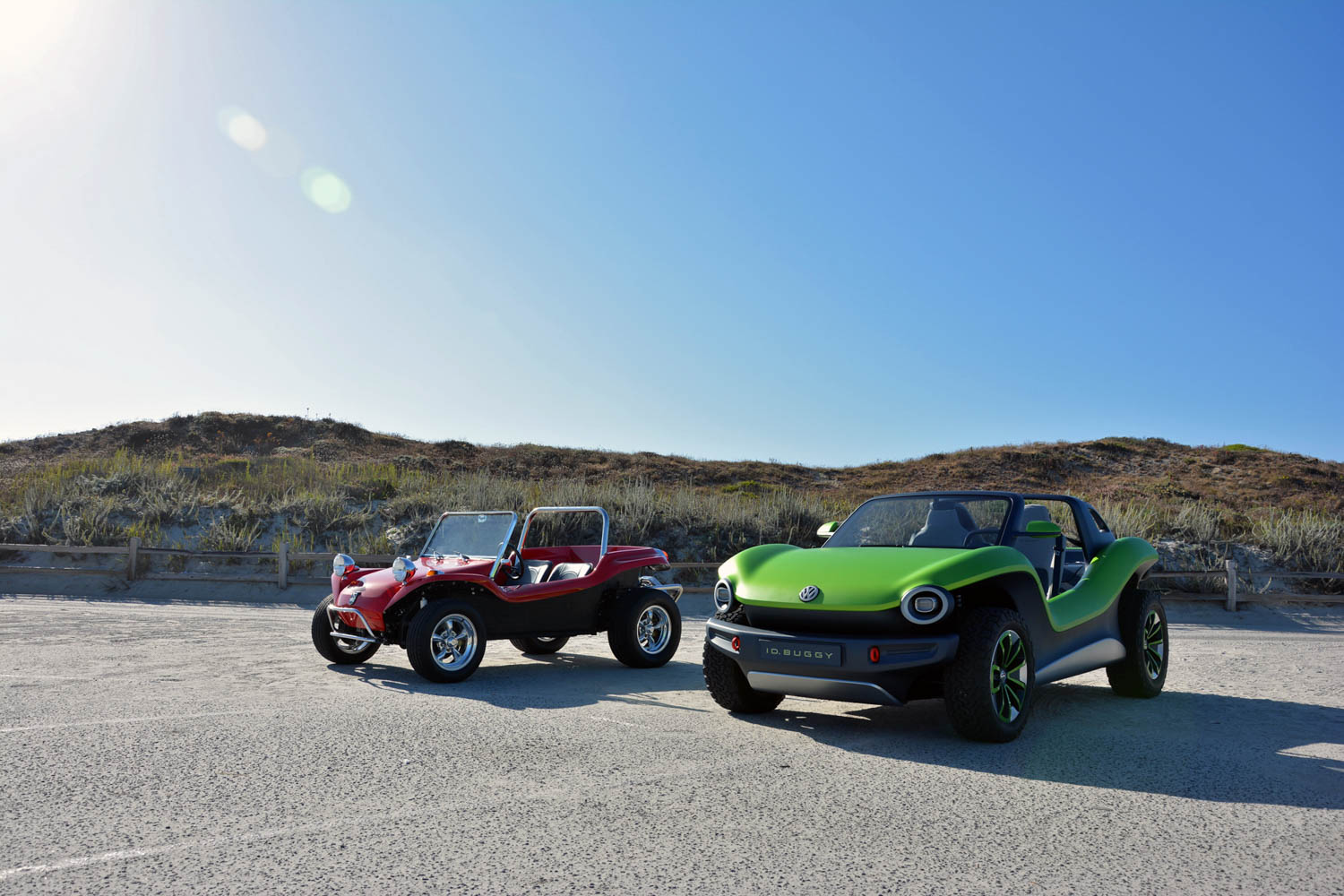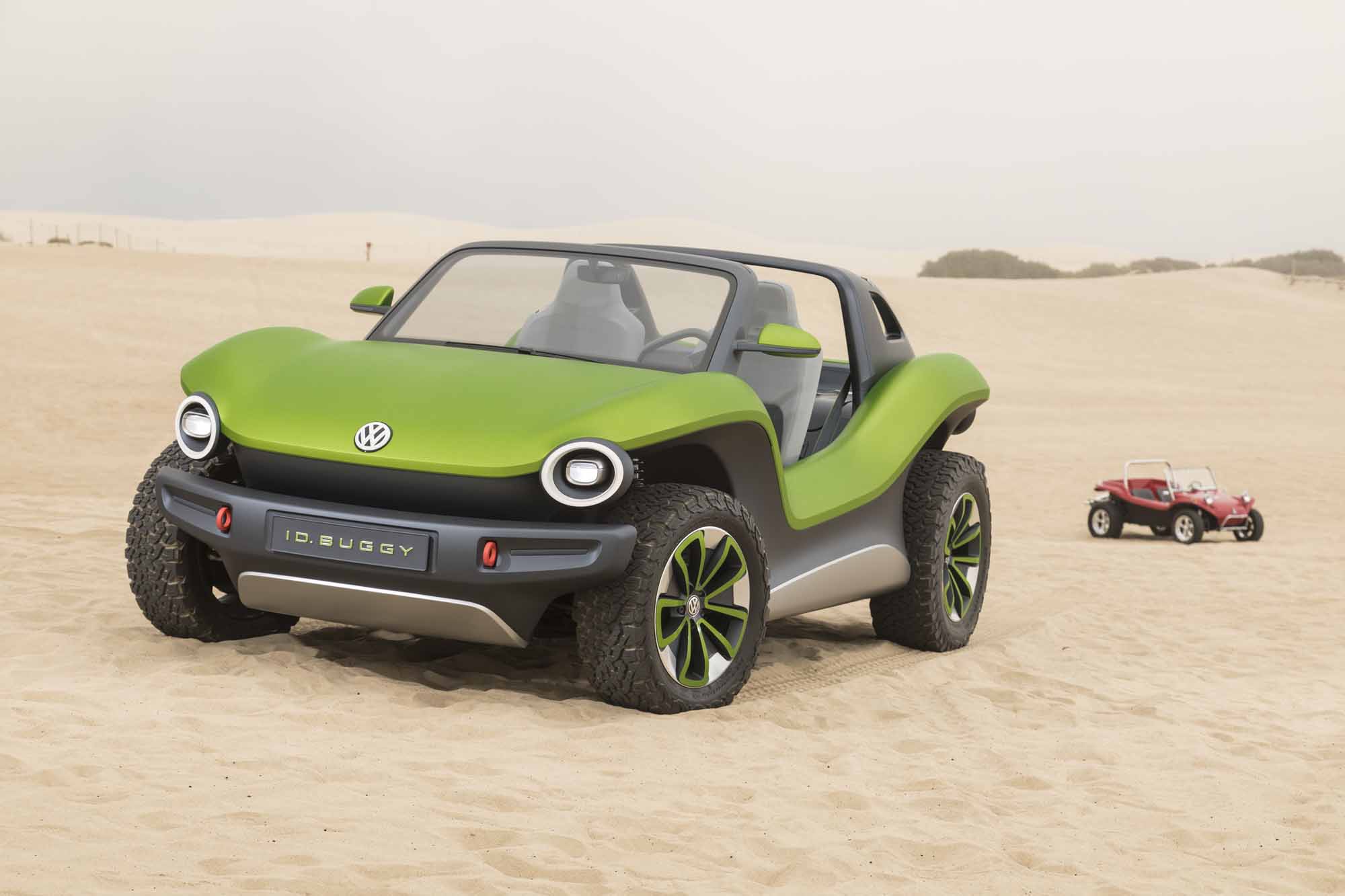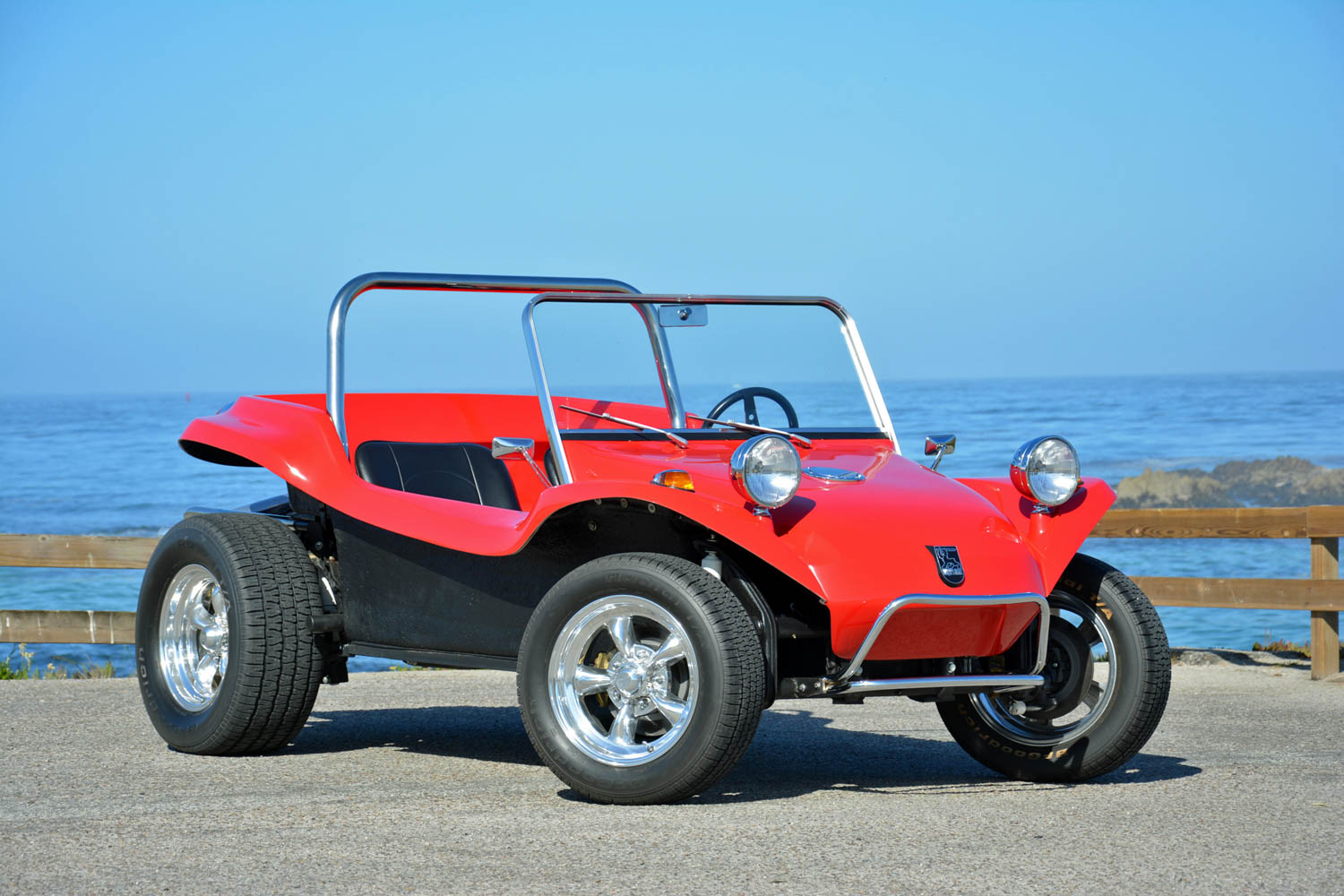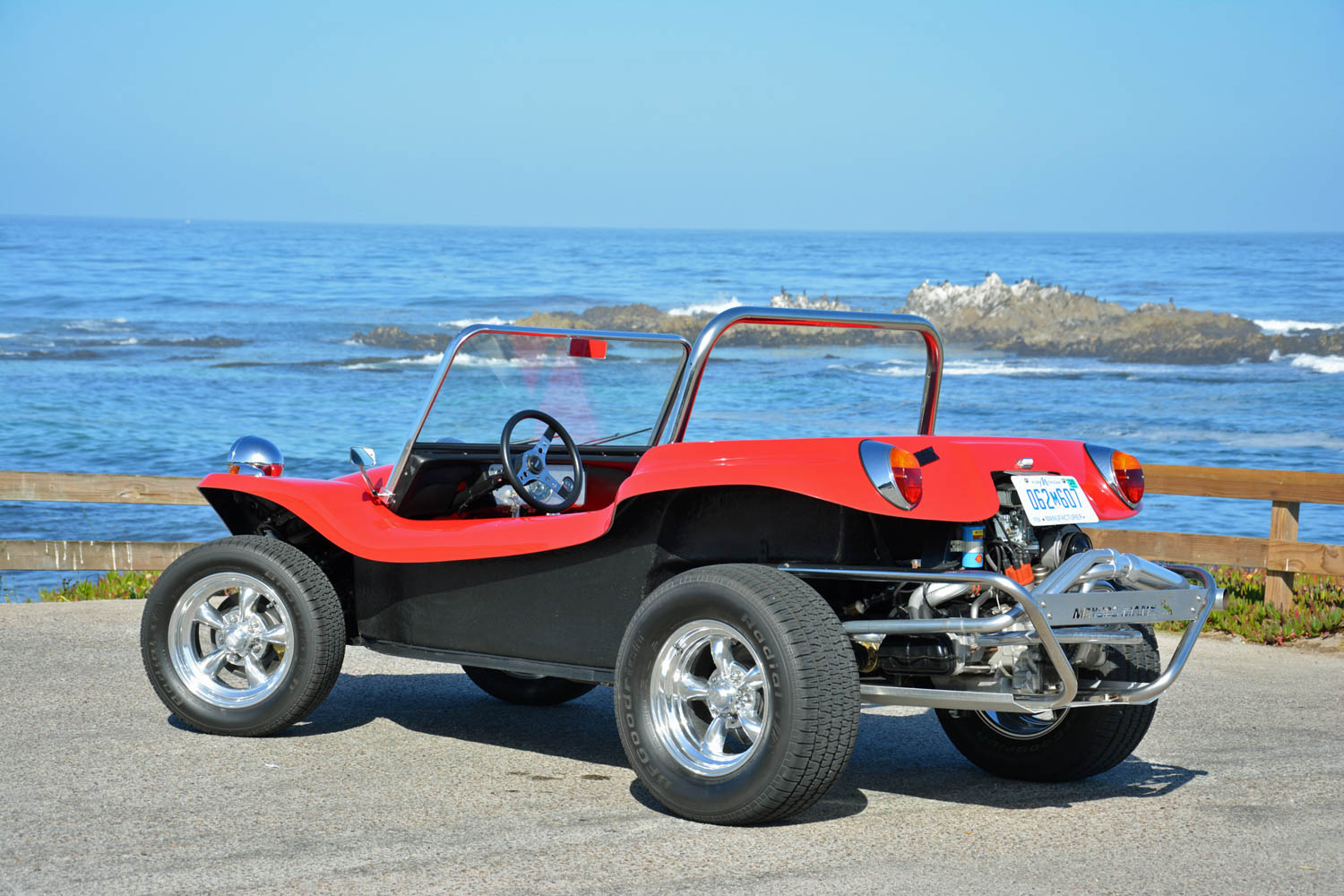VW ID Buggy and Meyers Manx have more in common than meets the eye
The emblematic, Volkswagen Beetle-based Meyers Manx added a new bullet point to its resume in 2019. After inspiring hundreds of Xerox copies all over the world, it motivated Volkswagen to create a modern buggy called ID Buggy that made its debut as a concept car during the Geneva Motor Show. It’s not a duplicate of the Manx, or a retro-styled model like the now-defunct Beetle. It’s more of a new chapter in the buggy’s history than an addendum, and the Manx is the bridge that links it to the Beetle.
The Manx’s story is well known. Envisioned as a dune racer, it’s a fiberglass-bodied stroke of genius that came from the mind of artist and boat builder Bruce Meyers in 1964. The example in Volkswagen’s heritage collection, the one taking us down the scenic 17-Mile Drive in central California, is a 1971 model that has been fully restored. It’s in like-new condition inside and out, and it feels like a time capsule. The only thing missing when you’re behind the wheel is a song by the Bee Gees. And, admittedly, a radio for it to play through. Odds are we wouldn’t be able to hear Barry Gibbs, though.
The Manx uses a blaring, 90-horsepower evolution of the Volkswagen’s air-cooled, 1.6-liter flat-four engine. That’s 30 more than a stock 1971 Beetle, yet the buggy’s 1250-pound weight makes it about 550 pounds lighter. Most of that weight is below the driver. Factor in the shorter wheelbase, and the Manx is much sharper to drive than a Beetle. It’s firmer when going around a corner, and it’s more eager to change direction, a trait accented by the relatively small steering wheel. When the road straightens, the power gain and weight loss make the Manx surprisingly peppy to drive. Keep in mind it has a better horsepower-to-weight ratio than a Porsche 914 with the four-cylinder engine.

The Meyers-built Manx is much more than a Beetle with a summer haircut, but there are some glaring similarities between the two models. Key parts like the floor-mounted pedals, the speedometer, and the gear selector come straight from the Volkswagen parts bin. The 1.6-liter hums the same way in both cars, but it’s louder. It’s like if Art Garfunkel replaced Axl Rose in Guns N’ Roses. In stark contrast, hopping into the ID Buggy after a jaunt in the Manx feels like putting on noise-canceling headphones.
It’s electric, and it’s completely silent—Bruce Meyers joked Volkswagen should add a sound synthesizer controlled by the accelerator pedal. Even the electric motor’s whine stays under the composite body and out of the passenger compartment. Volkswagen built the ID Buggy on MEB (the modular platform it’s developing to underpin a wide range of production EVs that are right around the corner) so here again the weight is under the driver. There is considerably more of it, too. It’s built on a 62-kWh, lithium-ion battery pack that zaps the rear wheels into motion. The Wolfsburg-based firm quotes 201 horsepower, 228 pound-feet of torque, and 155 miles of real-world driving range.
Volkswagen repurposed the recipe laid out by Meyers with modern ingredients. The Manx and the ID Buggy couldn’t be technically further apart, but they both take a refreshingly minimalist approach to motoring. The meaning of simplicity has changed over the past 55 years. In 1964, it meant not having opening body panels. In 2019, it also denotes a car without a touchscreen, or an infotainment system of any kind. It’s this straightforwardness that connects the two opposite ends of the same spectrum.
The first car built on the MEB platform will be a Golf-sized hatchback named ID.3 that’s scheduled to break cover during the 2019 Frankfurt Motor Show. It will carry the torch passed from the Beetle via the Golf, but it won’t be sold in the United States. Whether the ID Buggy gets the opportunity to pick up where the Manx left off depends on a variety of factors. Volkswagen is working with partners to make a business case for it, and the production model will arrive during the 2020s—if the numbers add up.





















